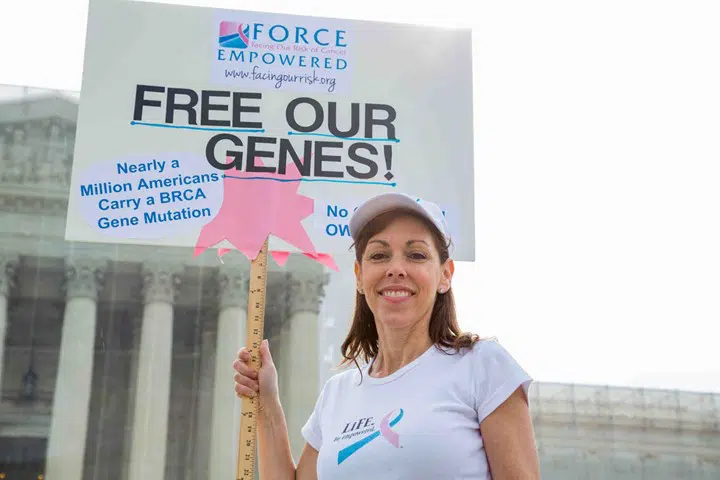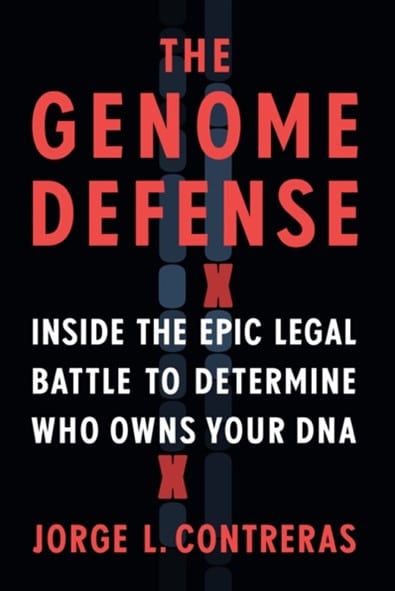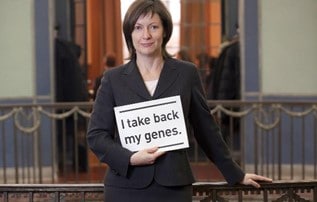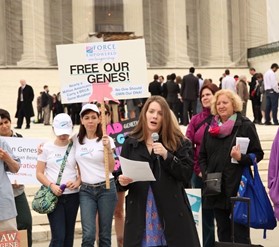PUBLISHED: 19th April 2022

By Jorge L. Contreras
In 2009, the American Civil Liberties Union (ACLU) and Public Patent Foundation (PubPat) launched a unique lawsuit challenging seven patents covering aspects of the BRCA1/2 genes and their use in diagnosing elevated risk for breast and ovarian cancer. In mounting this case, the ACLU and PubPat cooperated with FORCE to assemble a coalition of lawyers, scientists, counselors, patients and advocates in an unprecedented challenge not only to one company’s patents, but the entire practice of gene patenting in America. And, against the odds, they won. In 2013, the U.S. Supreme Court ruled in Association for Molecular Pathology v. Myriad Genetics that naturally occurring DNA sequences are not patentable, a ruling that has had repercussions throughout the genetic diagnostics world.
In The Genome Defense: Inside the Epic Legal Battle to Determine Who Owns Your DNA (New York: Hachette/Algonquin, 2021), I describe the long road that led to this unlikely Supreme Court victory. It began in 2003 when the ACLU hired its first science advisor, a Berkeley-based cellist and non-profit organizer named Tania Simoncelli. At the ACLU, Simoncelli’s job was to identify science-related issues that the ACLU could do something about. A couple of years into the role, Simoncelli mentioned gene patenting to Chris Hansen, a veteran ACLU litigator. At first, Hansen didn’t believe her. How could a company patent something inside the human body? But Simoncelli persisted, showing him articles and statistics demonstrating that, by 2005, more than 20% of the human genome was covered by patents. This realization led to Hansen’s oft-quoted exclamation, “Who can we sue?”
With the assistance of law professor Lori Andrews, who had lost an earlier lawsuit concerning patents covering the gene associated with Canavan’s Disease, and patent-busting attorney Dan Ravicher, who founded the non-profit PubPat, Hansen and Simoncelli set out to convince the ACLU that bringing a patent lawsuit was within the 100-year old organization’s remit. To do this, they had to find the right patents to challenge. With input from a range of scientific and medical experts, they settled on Myriad Genetics and its patents claiming the BRCA1 and BRCA2 genes. Myriad leveraged its patents, issued from the mid- to late-1990s, to lock up the market for BRCA testing and charged more than $3,000 to run a diagnostic test that, at first, most insurance carriers did not cover. As a result, many women were unable to obtain testing that could, literally, save their lives. The injustice of this situation led the ACLU’s Women’s Rights Project, founded in the 1970s by Ruth Bader Ginsburg, to get involved in the case. One of its newest attorneys, Sandra Park, became a key player in the lawsuit that the ACLU and PubPat finally brought in 2009.
As Simoncelli and Park worked to assemble a coalition of 20 plaintiffs to bring the case, they were assisted by genetic counselor Ellen Matloff, who introduced them to FORCE. Through FORCE, the ACLU got in touch with six women who had been unable to obtain BRCA testing and who were more than willing to join the lawsuit.
The litigation was lengthy and complex. Myriad hired Jones Day, one of the nation’s largest and most formidable law firms. They were joined by the Patent Office itself, which sought to defend not only Myriad’s patents, but its longstanding practice of allowing the discoverer of a gene to patent it as a new “composition of matter”.
The case attracted significant media attention, including segments on Today and 60 Minutes, as well as a steady stream of vituperative blog posts from the patent and biotech communities. A-list celebrities like novelist-producer Michael Crichton and actress Angelina Jolie weighed in, as did several members of Congress and Nobel laureates. But even more happened behind the scenes inside the executive agencies and offices of the Obama Administration. Here, the Patent Office and the National Institutes of Health led opposing factions in an internal struggle that ultimately led the Solicitor General to intervene in the case on the side of the plaintiffs, arguing that naturally occurring DNA sequences were not eligible for patent protection.
In litigating the case, the parties experienced multiple reversals and upsets, with public opinion and other cases proceeding alongside theirs appearing to have as large an effect on the outcome as the arguments made in the briefs. Members of Breast Cancer Action and FORCE took to the streets, organizing a rally on the steps of the Supreme Court on the morning of the oral arguments.
In the end, the Myriad case is not only an influential patent law decision, but a unique episode in American jurisprudence. It offers important lessons in how the law is made and how it can be changed, and how both individual determination and skill, combined with sheer luck, can improve public health and alter the course of history. Given the important role that FORCE played in these historic events, I am donating half of my proceeds from this book to FORCE in order to help in the continuing struggle to inform and advocate on behalf of the BRCA community. If you would like to join me in making a tax-deductible donation to FORCE, please do so here.


